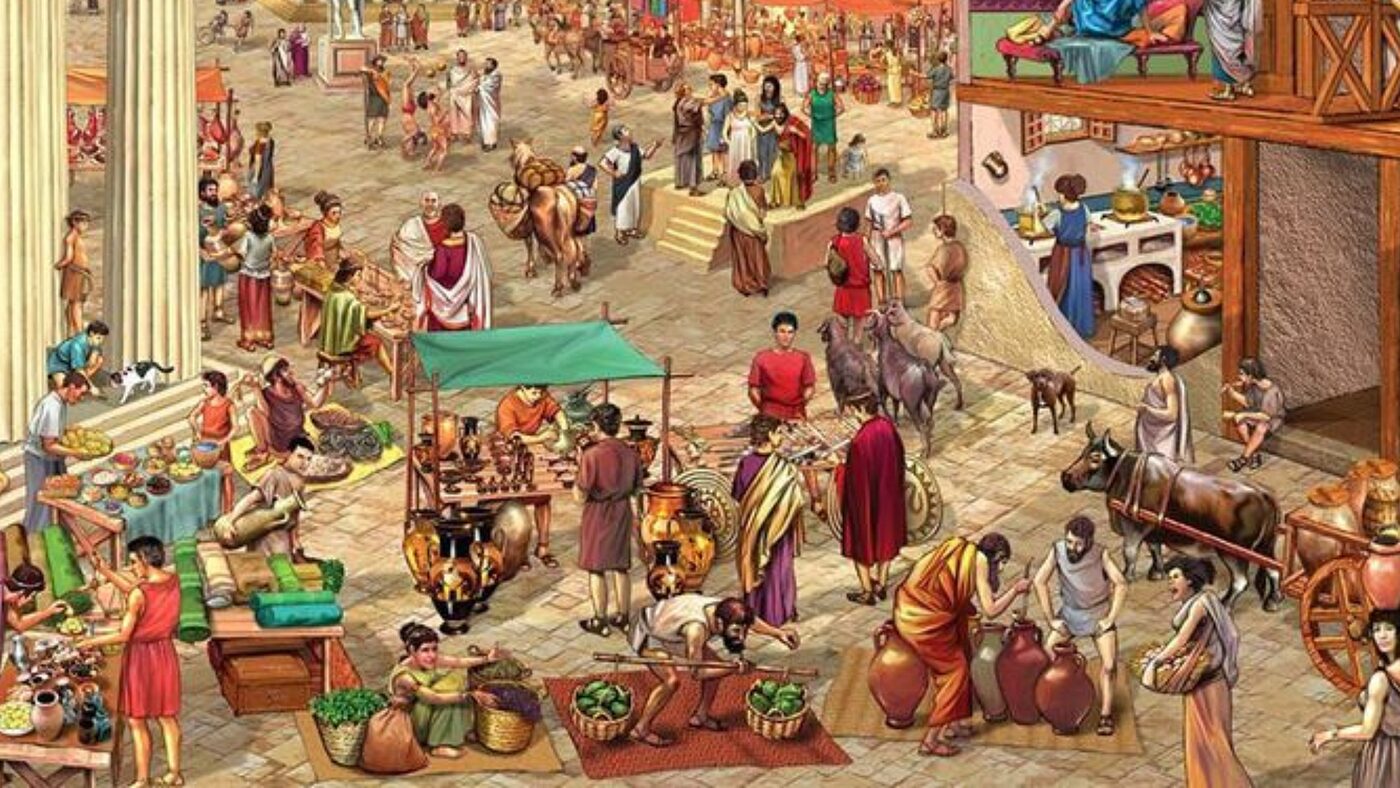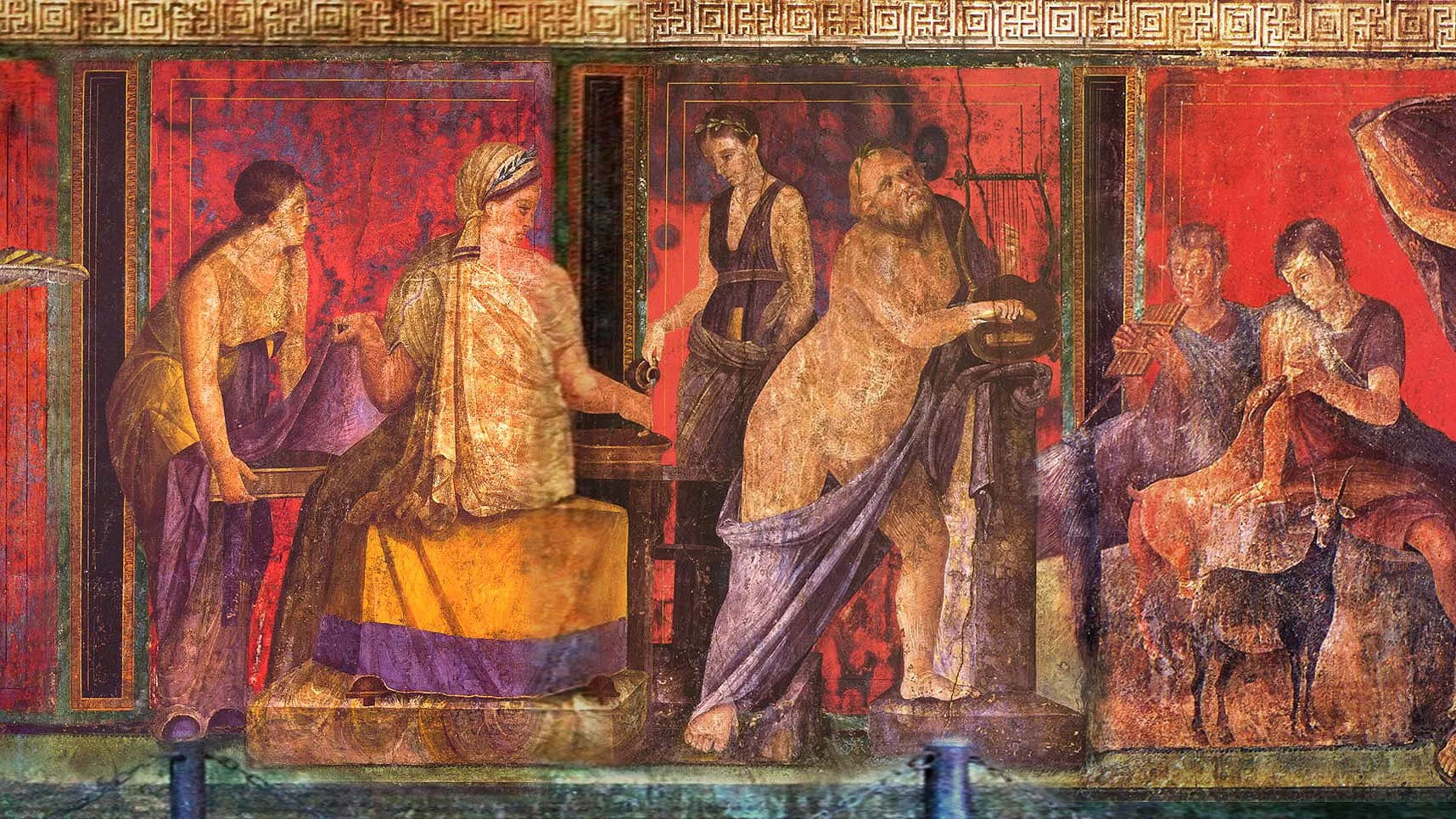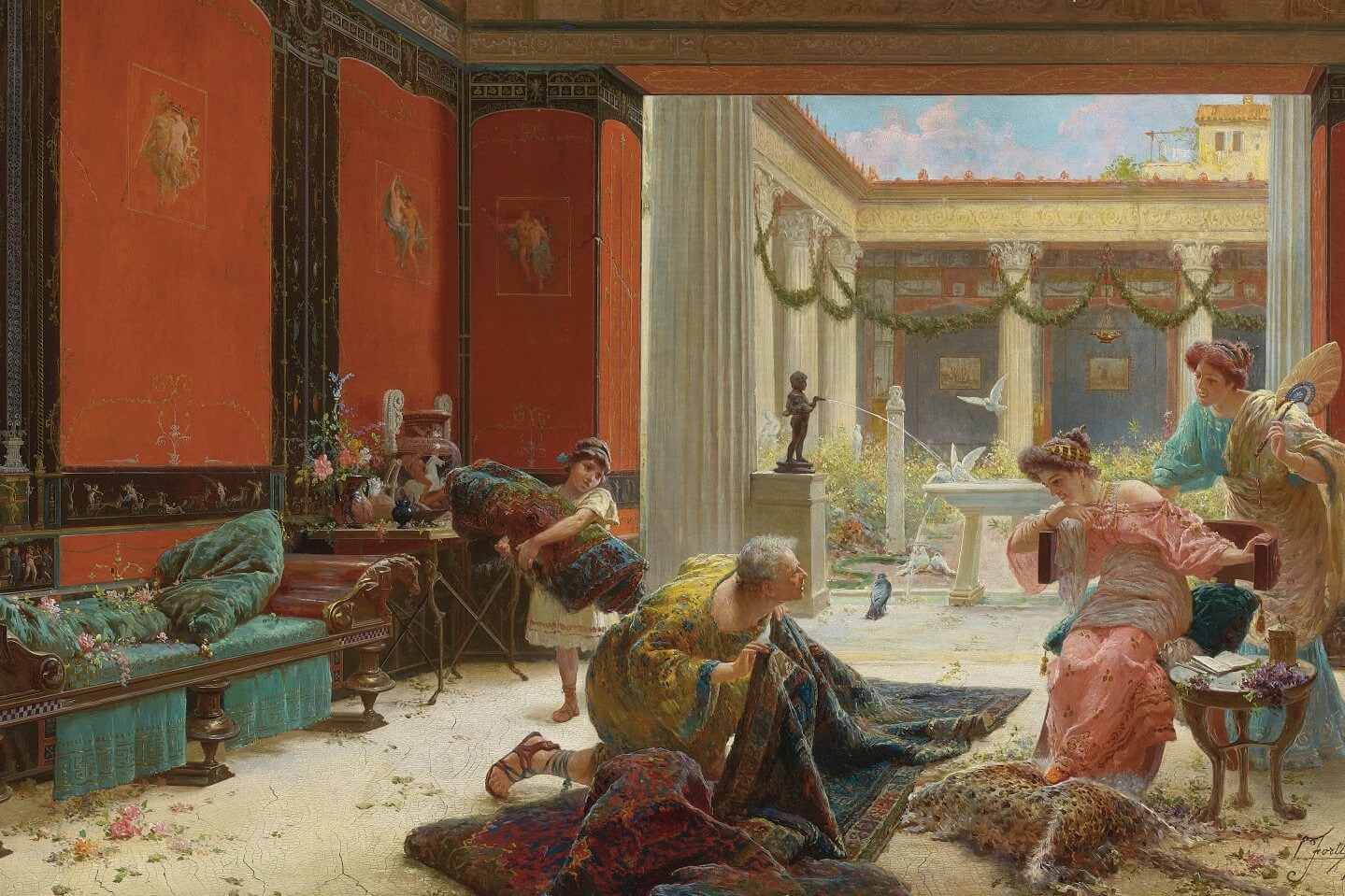Many people picture ancient Rome as a city of shining marble buildings, grand feasts, and powerful leaders. Movies and popular culture have strengthened this image, but life for most residents was far more complicated. Beneath the splendor lay crowded streets, constant noise, foul smells, and daily challenges that tested the endurance of ordinary citizens.
The city’s densely packed neighborhoods and poor infrastructure exposed its people to constant risks. Floods, fires, food shortages, and disease were common and could strike without warning. These dangers shaped daily life in ways that glamour and legend often hide. Understanding these realities reveals a side of Rome that was less majestic but far more human.
Key Takeaways
- Ancient Rome’s beauty hid a difficult and dangerous urban reality.
- Everyday life involved constant exposure to natural and man-made hazards.
- The city’s size and structure made struggles with safety and survival unavoidable.
Myths Versus Reality: The Image of Ancient Rome
Film and the Shaping of Roman Grandeur
Movies, especially from mid‑20th‑century Hollywood, have greatly influenced how people imagine ancient Rome. They often show gleaming marble temples, powerful rulers in white togas, and joyful crowds at grand spectacles. These films captured real parts of Roman life, like monumental architecture and public games, but they left out the daily challenges faced by most residents.
| Common Image | Historical Reality |
|---|---|
| Shining marble everywhere | Many buildings made of brick, wood, or plaster |
| Luxurious banquets for all | Most people ate simple, repetitive meals |
| Peaceful, clean streets | Overcrowded, noisy, and unsafe neighborhoods |
This contrast between screen and fact built a lasting myth that hides how harsh daily life in Rome truly was.
City Grandeur and the Realities of Urban Life
Behind the marble façades stood a city of nearly one million people—noisy, dirty, and dangerous. Floods from the Tiber River struck often, drowning low neighborhoods and ruining supplies. Fires spread quickly through narrow streets packed with wooden buildings.
The poor lived in tall, unstable apartment blocks that collapsed or burned with little warning. Most could not escape disasters, while wealthy citizens lived safely on the higher hills. Even basic needs such as food were uncertain, as the city relied on imported grain, oil, and wine.
Major urban dangers included:
- Floods – Frequent and destructive, striking low‑lying areas.
- Fires – Common due to close buildings and open flames.
- Famines – Caused by disruptions in imported food supplies.
- Filth – Waste and sewage polluted streets and water sources.
- Fevers – Spread easily in crowded conditions.
The true Rome was not just a center of splendor and power but also a crowded city where survival demanded endurance and luck.
Life in Ancient Rome: The Urban Struggle
City Crowding and Urban Scale
Ancient Rome reached a population of about one million people by the late first century BCE. This made it the largest city of its time and one of the most crowded in history before industrialization.
| Estimate | Period | Note |
|---|---|---|
| 1 million | Late 1st century BCE | Peak pre‑industrial city size |
| 1 million | 4th century CE | Population remained high |
Most citizens lived in multi‑story apartment blocks called insulae. Records list around 47,000 apartment buildings but only 1,800 private houses. Streets grew without planning, forming a maze of narrow, uneven paths that trapped smoke and waste. The city’s location along the Tiber River made flooding frequent, and low‑lying districts often went underwater.
Common dangers included:
- Floods that ruined buildings and food stores
- Fires that spread easily through wooden homes
- Disease from contaminated water and poor sanitation
Social Divisions and Everyday Hardship
Wealth determined how people experienced the city. The rich lived on high, dry hills with stone homes and open courtyards. The poor majority lived below in crowded tenements that were hot in summer, cold in winter, and unsafe.
Differences in living conditions:
| Social Group | Typical Housing | Main Risks |
|---|---|---|
| Elite | Brick or marble houses on hills | Minor flood risk |
| Poor citizens | Wooden, cramped apartments | Fire, collapse, disease |
Daily life for most Romans meant enduring noise, filth, and the threat of disasters. Clean water, stable housing, and steady food supplies were uncertain. The gap between classes shaped every part of the urban experience, turning Rome’s grand capital into a place of constant struggle for survival.
The Five Major Hazards of Ancient Rome
Flooding Threats
Rome’s position along the Tiber River made flooding a constant danger. The low, marshy plains between its hills often filled with water when the river overflowed. Major floods happened roughly every 25 years, while smaller ones struck about every 5 years.
During the worst floods, water could rise dozens of feet, covering public spaces like the Forum and Circus Maximus. Boats sometimes moved through the streets for days. Floods ruined food supplies, spread sewage, and weakened buildings—especially the insulae, or apartment blocks, where most citizens lived.
| Group | Area Affected | Impact |
|---|---|---|
| Wealthy citizens | Hilltops | Mostly safe |
| Poor residents | Lowlands | Severe damage, displacement |
Fire Hazards
Crowded housing, open flames, and oil lamps made fires common. With narrow, twisting streets and tall wooden buildings, flames spread quickly. Small fires occurred almost nightly, and large ones destroyed entire neighborhoods every few years.
The Great Fire of 64 AD burned for nine days and ruined most of the city. Emperor Augustus had already formed a watch group of about 7,000 firemen, but they could only manage small blazes. Once a large structure caught fire, collapse was almost certain.
Common fire risks:
- Cooking over open flames
- Oil lamps tipping over
- Overcrowded apartments made of wood
Food Shortages
Rome’s population of about one million people depended heavily on imported food. The local countryside could not feed the city, so grain and oil arrived from Egypt and North Africa. If shipping was delayed by storms, wars, or corruption, food prices rose and hunger followed.
Most people ate simple meals of bread, olive oil, and wine, sometimes flavored with herbs or cheap vegetables. Wealthy Romans enjoyed meat and imported fruits, but for everyone else, even a short break in grain delivery could cause widespread distress.
Unsanitary Conditions
The city’s size and poor waste control created filthy conditions. Streets overflowed with refuse, and broken sewers spread foul odors. Many neighborhoods lacked proper drains, so waste and water mixed in the open.
Public baths and latrines helped a little, but overcrowding made cleanliness difficult. Rats and insects thrived, making life unpleasant and unhealthy for the lower classes who lived in cramped apartments without plumbing.
Disease and Illness
Dirty water, spoiled food, and poor air made disease common. Outbreaks of fever, diarrhea, and infections swept through the city. Doctors were few, and even minor illnesses could become deadly.
In crowded tenements, sickness spread fast. Floods and heat worsened the problem by contaminating wells and storage jars. Many Romans lived with constant risk of illness, making good health rare and brief.
Floods: Rome’s Perennial Threat
Rome’s Location and Natural Risk
Much of ancient Rome stood in valleys and low plains between its seven hills. These flat areas had once been marshland and remained damp even after being built over. The city rested on the banks of the Tiber River at one of its lowest and most unstable points, which made flooding frequent and often severe.
Floods happened every few years, while major ones struck about once every twenty-five years. During the worst events, the water could rise up to 50 feet above normal levels. Important places such as the Roman Forum, Colosseum, Pantheon, and Circus Maximus were often swamped. Boats sometimes replaced carts on city streets when the water stayed high for several days.
Effects on Buildings and Daily Life
The rising waters weakened the foundations of many structures. Cracks and collapses were common after strong floods. Stonework, wood, and plaster all suffered long-term damage, increasing the risk of later destruction.
City sanitation also failed during floods. Sewers overflowed, spilling waste into homes and public areas. Contaminated water spread illnesses and ruined stored grain. Market supplies spoiled, and prices rose when food became scarce.
| Problem | Result |
|---|---|
| Flooded foundations | Building collapse |
| Overflowing sewers | Disease and stench |
| Waterlogged storehouses | Food shortages |
Wealth and Exposure to Flood Damage
Floods revealed a deep divide between rich and poor residents. Those with wealth lived on hillsides, above the floodplain, where streets stayed mostly dry. Poorer citizens filled the lower quarters, where the floods hit hardest.
Most low-income people lived in large, thin-walled apartment blocks called insulae. They were often poorly built and stood close together. These buildings were the first to fail when water rose quickly. Records show that tens of thousands of such apartments stood in Rome, compared to only a few thousand private houses.
For the poor, flooding was not rare—it was part of city life. It damaged their homes, destroyed their limited belongings, and spread disease through their neighborhoods while the wealthier few watched safely from the higher ground.
Fires: The Ever-Present Danger
Sources of Blazes in the City
Fires often started from simple household activities. Open-flame lamps, cooking fires, and oil-fueled lights made accidents common. In the dense housing blocks, a single spark could ignite wooden beams or furniture. These small blazes could grow quickly before anyone had time to react.
City Design and How Flames Spread
Rome’s streets twisted in narrow, uneven paths, leaving little room to stop a spreading fire. Many apartment buildings, called insulae, stood close together and built upward to several stories. When a blaze began, wind and dry materials helped it move from one structure to the next with ease. Once past the starting point, most fires became nearly impossible to control.
| Feature | Impact on Fire Spread |
|---|---|
| Narrow alleys | Allowed flames to jump easily between buildings |
| Wooden supports | Added fuel to fires |
| Crowded housing | Made evacuation difficult |
| Limited access to water | Slowed firefighting efforts |
Measures to Prevent and Manage Fires
The emperor Augustus created a force of 7,000 night watchmen to handle fires. They carried buckets and axes, ready to break through walls or draw water from nearby fountains. These fire patrols helped limit small fires, but against large ones, they stood little chance. The lack of organized equipment and the scale of the city meant disasters still occurred regularly.
Common Tools Used by Fire Watchmen:
- Buckets for water
- Axes to tear down burning walls
- Torches for light
- Ropes for rescue work
Consequences for the People
Residents lived in constant fear of being trapped in upper floors during a nighttime fire. Those on lower levels could escape faster, while people in attic apartments faced the greatest danger. Entire neighborhoods burned down every few years, and the Great Fire of 64 AD destroyed large sections of Rome. Many families lost their homes and belongings overnight, forced to rebuild again in the same risky conditions.
Famines: Food Insecurity in the Imperial Capital
Eating Habits of Common Citizens
Most people in Rome lived on a basic and repetitive diet. Their daily meals usually centered on grain, olives, and wine.
- Grain was used to make bread or a thick porridge.
- Olives or olive oil provided needed fat.
- Wine, often mixed with water, was a common drink for all classes.
For ordinary residents, these three staples made up about three-quarters of their food intake. Few could afford meat, fruit, or cheese. The variety seen at elite banquets existed far from the lives of most Romans.
Reliance on Imported Supplies
Rome’s population, reaching roughly one million, far exceeded the city’s local food capacity. To feed everyone, the capital relied on massive imports from Egypt, North Africa, and Sicily.
These regions shipped grain across the Mediterranean in large fleets that arrived at the city’s ports. The system functioned smoothly in good years but left the capital vulnerable. Disruptions from bad weather, piracy, or political conflict could stop shipments and threaten supply lines.
| Source Region | Main Product | Transport Method |
|---|---|---|
| Egypt | Grain | Nile River to Mediterranean |
| North Africa | Grain, Oil | Sea routes to Rome |
| Sicily | Grain | Coastal trade ships |
Effects of Food Shortfalls
When imports slowed or harvests failed, panic spread quickly. Prices rose, and lines formed at the grain distribution points. Poorer residents suffered first since they had no reserves. Hunger and unrest often followed.
The government sometimes tried to calm the population with free or subsidized grain, but these measures did not always prevent hardship. Shortages could lead to protests, theft, and even violence in the crowded streets.
Daily Life Amid Hazards
Life Inside Crowded Apartments
Most ordinary Romans lived in tall apartment blocks known for their poor construction and limited space. These buildings often leaned dangerously and collapsed during heavy rains or floods.
- Typical residents: shopkeepers, laborers, and their families
- Building count: about 47,000 apartments compared to only 1,800 single houses
- Living conditions: high rents, no running water, and few safety measures
Residents on upper floors faced daily struggles. Carrying water up several flights was tiring, and climbing down during fires was risky. Wealthier citizens avoided these hazards by living on the city’s hills, far from the flood zones.
Risks and Illness in the City
Fire and disease shaped everyday life. Open flames for cooking and poor lighting made accidental fires common. Narrow, twisting streets helped flames spread quickly. Even small lamps or kitchen pots could ignite a block.
Floods from the Tiber River added further danger. When the river overflowed, filthy water carried sewage through the streets and into homes. Stagnant water encouraged insects and disease. Food stores also spoiled easily after floods, worsening shortages.
| Major Urban Hazards | Effects on the Population |
|---|---|
| Flooding | Building damage, lost food, contaminated water |
| Fires | Frequent destruction, deaths, homelessness |
| Disease | Poor sanitation, spread through dirty water and overcrowding |
Differences Between the Privileged and the Poor
Daily life differed sharply by social class. The rich built strong homes on high ground away from floods. They had slaves and servants to manage daily chores and secure food.
Common people faced nearly all the city’s hazards. Low-income families lived in unsafe, cramped quarters and relied on state grain handouts to survive. For them, floods, fires, and shortage of food were constant realities rather than rare emergencies.



